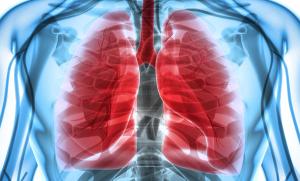
“That’s the beauty of science. Anything can be intellectual.”

Your AI-Trained Oncology Knowledge Connection!


“That’s the beauty of science. Anything can be intellectual.”

The review by Oxnard and Miller provides a thoughtful update on the use of the epidermal growth factor receptor (EGFR) tyrosine kinase inhibitors (TKIs) gefitinib (Iressa) and erlotinib (Tarceva) as front-line therapy in patients with non–small-cell lung cancer (NSCLC).

This review summarizes the pathophysiology and clinical presentation of the cutaneous toxicities associated with EGFR inhibition. Such effects include papulopustular reactions, xerosis, pruritus, fissures, nail changes, hair changes, telangiectasias, hyperpigmentation, and mucositis. Most management strategies for these toxicities have been based on anecdotal experience; clinical trials are needed to provide uniform characterization to allow for evidence-based treatment strategies.

An acneiform-like skin toxicity is commonly observed in patients with solid tumors treated with epidermal growth factor receptor inhibitors (EGFRIs). This symptomatic rash is related to epidermal growth factor receptor (EGFR) inhibition in the skin. A positive relation between the presence and severity of treatment-related rash and survival has been consistently observed with all EGFRIs approved for clinical use. These findings suggest that rash may be a useful surrogate marker of successful EGFR inhibition and clinical benefit and therefore of possible use in identifying patients most likely to benefit from therapy, as well as to guide dose adjustments. Increasing drug dose until skin toxicity appears is being studied. Further studies are needed to thoroughly evaluate the value of skin toxicity as a surrogate marker for clinical benefit. Current treatments of the skin toxicity are empirical and oriented toward mitigating symptoms and not validated by well-controlled clinical trials. Rational treatments based on the biological mechanisms of the skin toxicity must be developed and tested in well-controlled clinical trials.

Rash is a class effect of HER1/epidermal growth factor receptor(EGFR)-targeted agents, and has occurred with high frequency and ina dose-dependent manner in clinical trials of these agents in cancerpatients. Analysis of phase II trials of erlotinib (Tarceva) in non–smallcelllung cancer, head and neck cancer, and ovarian cancer shows asignificant association between rash severity and objective tumor response.Rash severity was highly significantly associated with survivalin patients with non–small-cell lung cancer receiving erlotinib; mediansurvival in patients with no rash was 46.5 days, compared with257 days in those with grade 1 rash (P < .0001) and 597 days in thosewith grade 2/3 rash (P < .0001). Similarly, for the combined non–smallcelllung cancer, head and neck cancer, and ovarian cancer studies,median survival in patients with no rash was 103 days, compared with191 days in those with grade 1 rash (P = .0001) and 266 days in thosewith grade 2/3/4 rash (P = .0001). Similar findings have been madewith cetuximab (Erbitux) and in some settings with gefitinib (Iressa).The strong association of rash severity with response/survival suggeststhat rash may serve as a marker of response to erlotinib treatment andmay be used to guide treatment to obtain optimal response. Dosingerlotinib at the maximum tolerated dose, which is associated with morefrequent and more severe rash, may improve response rates and survivaldurations. Further study of the potentially important associationbetween rash and outcome of treatment with EGFR-targeted agents isneeded.

Published: September 20th 2021 | Updated:

Published: November 2nd 2003 | Updated:

Published: April 30th 2010 | Updated:

Published: October 1st 2007 | Updated:

Published: October 1st 2007 | Updated: